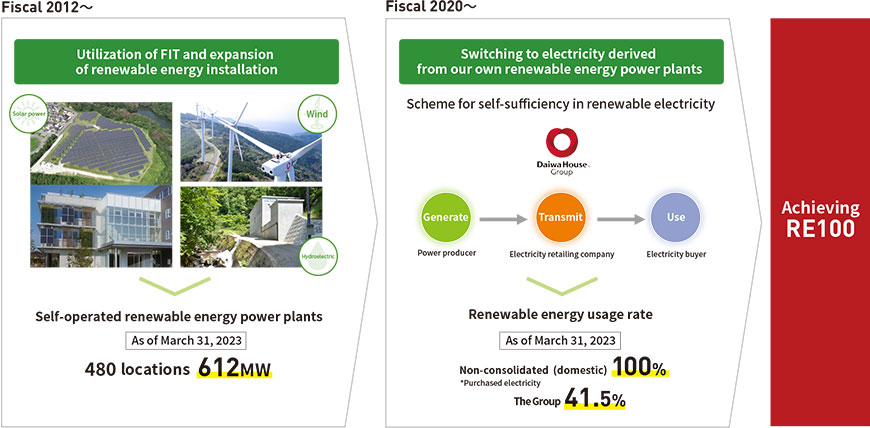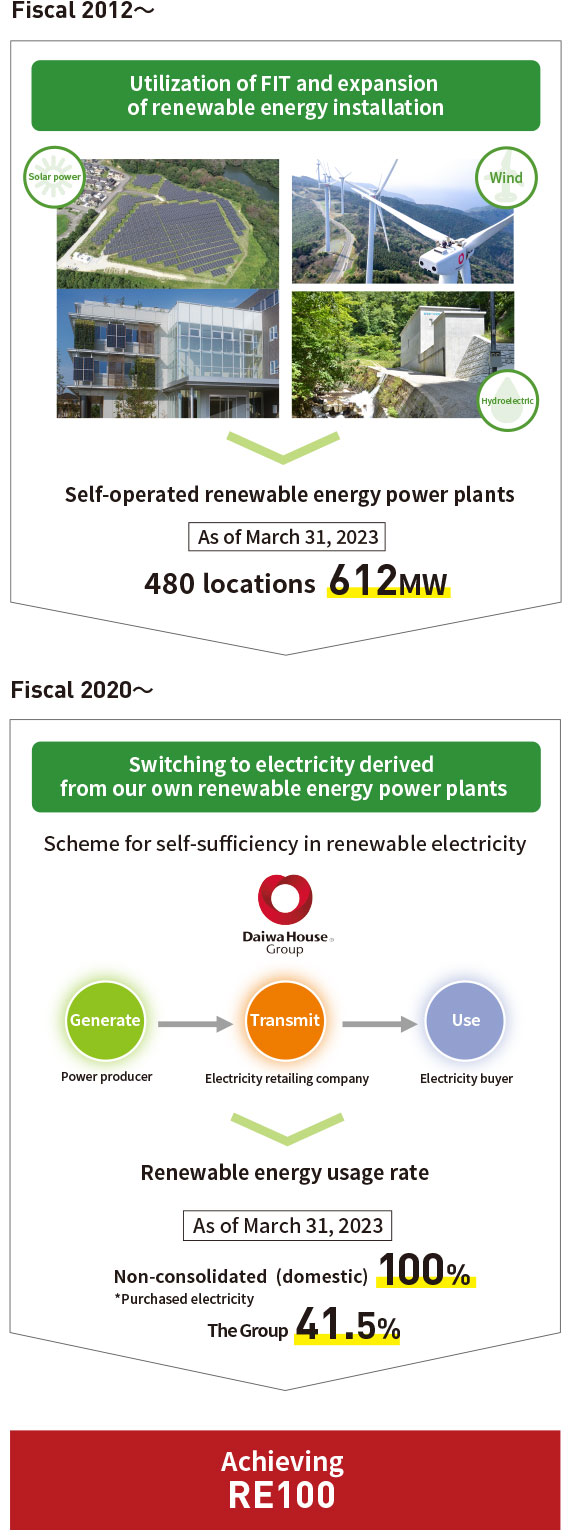MENU
We are stepping up to the challenges of energy savings, electrification and renewable energy in pursuit of reductions to GHG emissions in our business activities.
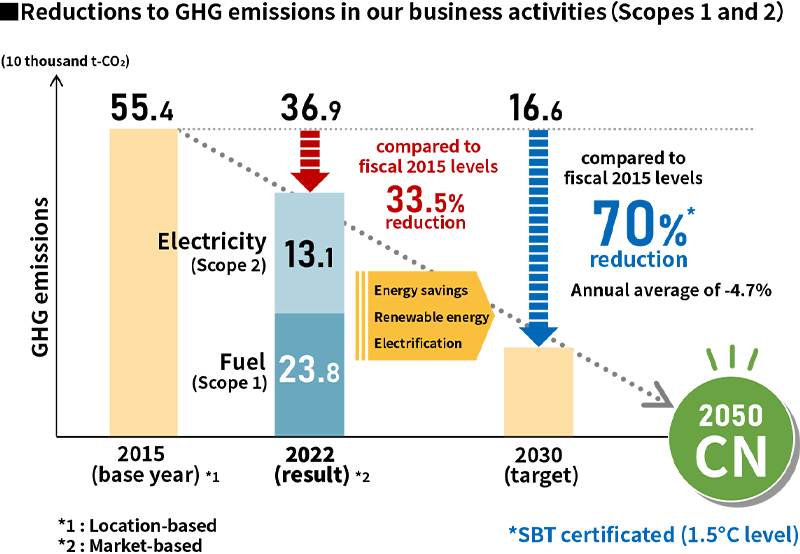
Fiscal 2030 targets

In the area of energy savings, as a general rule we will build our own new facilities in ZEB* (Net-Zero Energy Building), and in existing facilities we will continue to invest in energy conservation and update facilities in a planned manner. In existing facilities, we will continue to invest in energy conservation equivalent to 15% of energy costs over more than 10 years and systematically replace equipment. We aim to achieve the goal of doubling the energy efficiency of our business operations by 2030, which is the goal set forth in EP100.

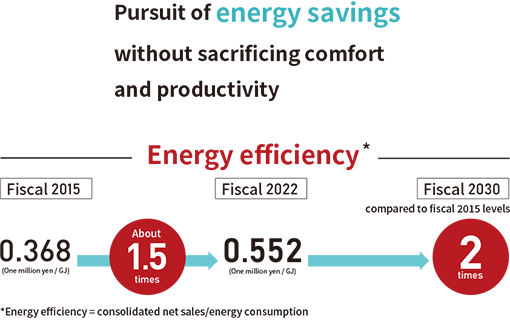
Office
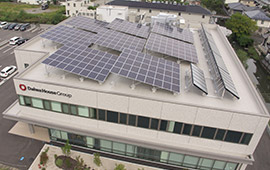
Daiwa House Industry Nishi-Kyushu Branch
(Nearly ZEB)
Retail store
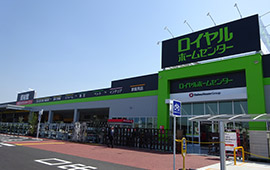
Royal Home Center Tsushima
(ZEB)
Shopping center
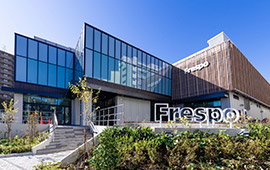
FRESPO Hibarigaoka
(ZEB Ready)
* ZEB: Refers to Zero Energy Buildings that are designed to achieve net zero primary energy consumption yearly, by improving the energy-saving performance with insulation and energy-efficient equipment, and creating energy through solar power generation or similar means.
Fiscal 2030 targets

In the area of electrification, we are promoting the use of clean energy vehicles (CEVs), aiming to achieve a 100% adoption rate for company vehicles and a 30% adoption rate for personal cars of employees, who are allowed to use those vehicles for work purposes, by 2030.
Fiscal 2025 targets

In the area of renewable energy, we aim to achieve a 100% utilization rate of renewable energy by leveraging the value of such energy derived from the renewable energy power plants developed and operated by the Group.
In fiscal 2020, the amount of electricity generated by the Group exceeded that used, and as of March 31, 2024, the Group operated renewable energy power plants with a total capacity of 713 MW (including in-house consumption), which is 1.6 times as large as the Group’s power consumption. We will continue to expand the development and operation of renewable energy power output, mainly solar power generation.

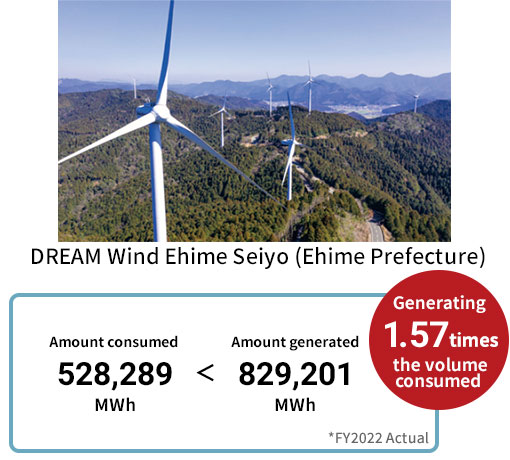
The Group was a step ahead of other companies in commencing development of renewable energy power generation, and in 2000 led off with the installation of large-scale wind and solar power generation systems in its own facilities, while also undertaking development at the hotels, factories and other locations it owns and operates. Since the establishment of the FIT program (*1) in 2012, we have been working to expand the amount of renewable energy generated, and from fiscal 2020 we have been promoting the switch to electricity generated by our own renewable energy power plants for use at our own facilities.
Using the system of non-fossil certificates*2 started in fiscal 2020, we launched a scheme to make us self-sufficient in renewable energy as a way to achieve RE100. With the establishment of this scheme, we utilized the value of renewable energy generated with renewables at the power stations developed and managed by the Group, and in fiscal 2022, all power purchased by Daiwa House Industry (the Group’s parent entity) in Japan was derived from renewable energy sources. We aim to reach RE100 of 100% renewable energy in fiscal 2025, including power from in-house facilities.
